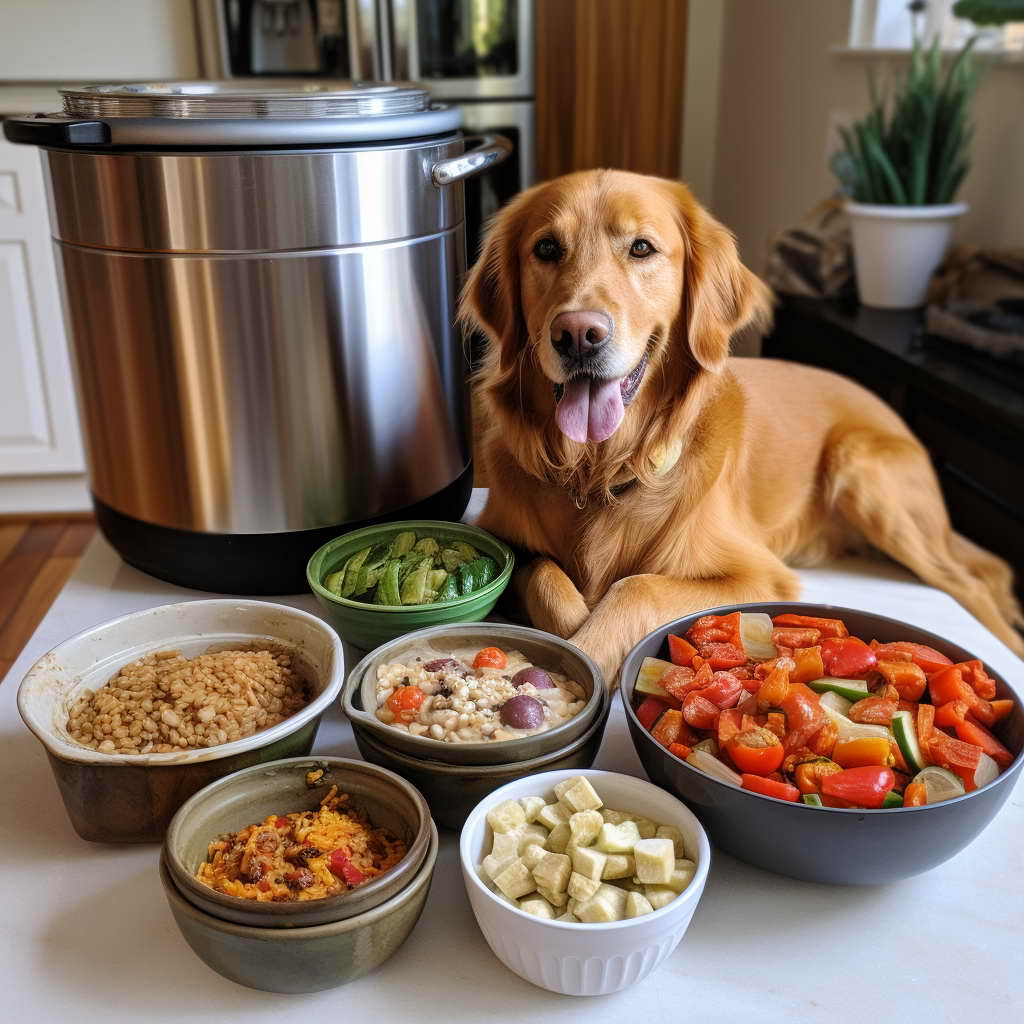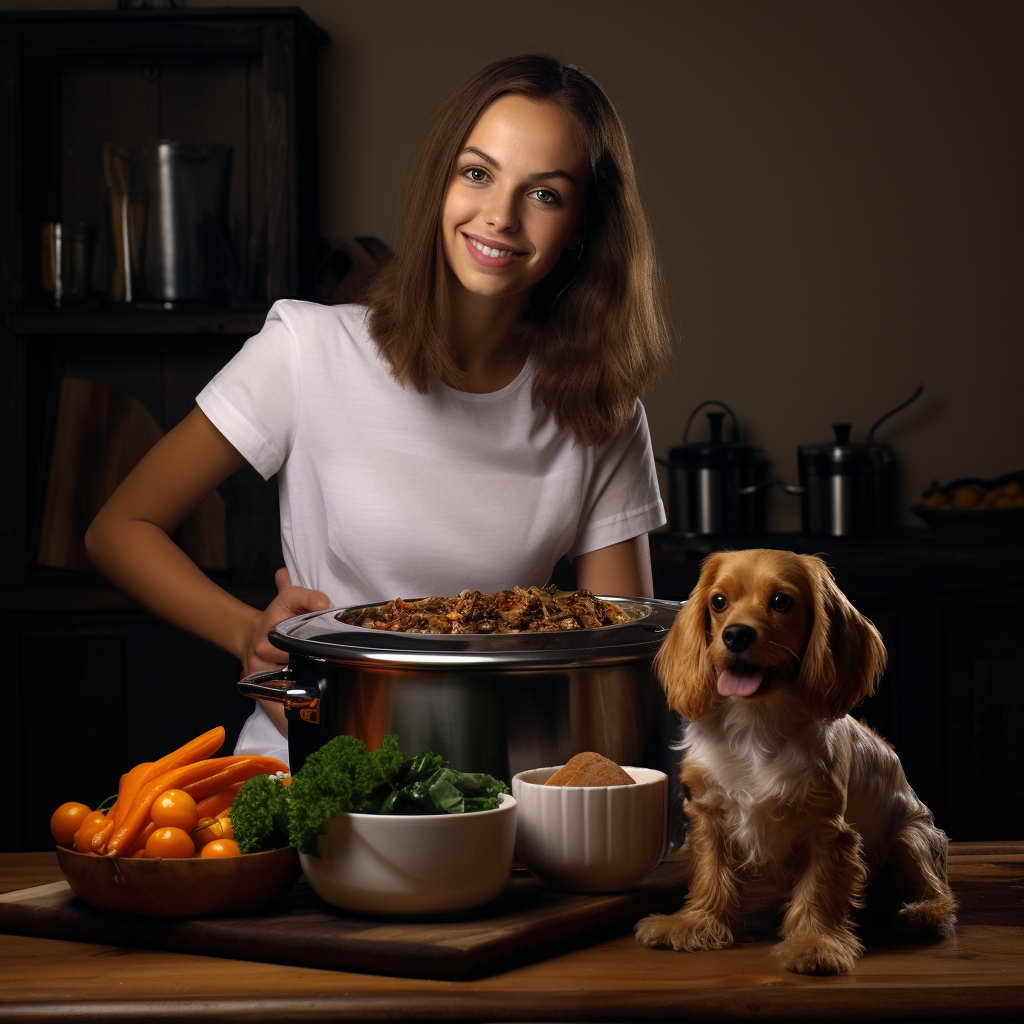How Do You Make Homemade Dog Food: A Comprehensive Guide
In today’s fast-paced world, many pet owners are turning to homemade dog food as a way to ensure their furry companions get the best nutrition. Making homemade dog food allows you to have full control over what goes into your dog’s diet, ensuring they receive high-quality ingredients tailored to their specific needs.
If you’re wondering, “How do you make homemade dog food?” you’ve come to the right place. In this comprehensive guide, we will walk you through everything you need to know to prepare nutritious and tasty homemade dog food that your pet will love.
Introduction
As responsible pet owners, we always want the best for our furry friends. One of the most important aspects of their well-being is their diet. Commercial dog food can be convenient, but it often contains preservatives and additives that may not be ideal for your dog’s health. That’s where homemade dog food comes into play. By making your dog’s food at home, you can ensure it’s made from wholesome ingredients that meet their specific nutritional needs.
In this article, we’ll delve into the world of homemade dog food, exploring recipes, ingredients, and tips to provide your four-legged companion with a diet that promotes health and happiness.
How Do You Make Homemade Dog Food?
Selecting the Right Ingredients
Before you embark on your homemade dog food journey, it’s crucial to understand what ingredients are safe and beneficial for your dog. Here are some key elements to consider:
- Proteins: Dogs thrive on protein-rich diets. Opt for lean meats like chicken, turkey, or beef. Avoid fatty cuts and processed meats.
- Vegetables: Incorporate vegetables like carrots, peas, and sweet potatoes for essential vitamins and fiber.
- Grains: Choose whole grains like brown rice or oats for a healthy source of carbohydrates.
- Fats: Include healthy fats like olive oil or fish oil to support your dog’s coat and skin health.
- Calcium: Ensure your dog gets enough calcium by adding sources like eggshells or bone meal to their diet.
Creating Balanced Recipes
Once you’ve gathered your ingredients, it’s time to create balanced recipes that cater to your dog’s specific needs. Consult with your veterinarian to determine the ideal portion sizes and nutrient ratios for your dog’s age, size, and activity level.
Cooking Methods
When cooking homemade dog food, opt for methods like boiling or steaming rather than frying or adding excessive oils. This ensures that the nutrients in the ingredients are preserved.
Avoid Harmful Foods
Just as important as knowing what to include is knowing what to avoid. Some foods can be toxic to dogs, such as chocolate, onions, grapes, and garlic. Make sure to keep these out of your homemade dog food recipes.
Meal Planning
Consistency is key when feeding your dog homemade food. Establish a meal plan and schedule to ensure your dog receives the right nutrients at the right times.
Nutrient-Rich Homemade Dog Food
Creating nutrient-rich homemade dog food is essential to your pet’s health and well-being. By carefully selecting ingredients and crafting balanced recipes, you can provide your dog with all the essential nutrients they need.
Homemade Dog Food vs. Commercial Dog Food
Many pet owners wonder whether homemade dog food is superior to commercial options. While both have their merits, homemade dog food allows for better ingredient control, making it a preferred choice for those seeking a tailored diet for their pets.

Homemade Dog Food Recipes
Recipe 1: Chicken and Rice Delight
- Ingredients:
- 2 cups of cooked chicken breast, shredded
- 1 cup of brown rice, cooked
- 1/2 cup of peas, cooked
- 1/2 cup of carrots, diced
- 1 tablespoon of olive oil
- 1/4 teaspoon of calcium supplement
- Instructions:
- In a large bowl, combine the shredded chicken, cooked rice, peas, carrots, and olive oil.
- Add the calcium supplement and mix well.
- Serve in appropriate portions for your dog’s size and store the remainder in the refrigerator.
Recipe 2: Beef and Sweet Potato Medley
- Ingredients:
- 2 cups of cooked lean ground beef
- 1 cup of sweet potatoes, cooked and mashed
- 1/2 cup of green beans, steamed
- 1/4 cup of fish oil
- 1/4 teaspoon of bone meal
- Instructions:
- Combine the cooked beef, mashed sweet potatoes, and steamed green beans in a bowl.
- Add fish oil and bone meal, mixing thoroughly.
- Serve and refrigerate the remaining portions.
FAQs
Can I feed my dog homemade food every day?
Yes, you can feed your dog homemade food every day as long as it’s well-balanced and meets their nutritional requirements. Consult with your veterinarian to create a suitable meal plan.
Is it more expensive to make homemade dog food?
Making homemade dog food can be cost-effective, especially when buying ingredients in bulk. It also allows you to control the quality of the ingredients.
Can I use raw meat in homemade dog food?
While some pet owners do incorporate raw meat into their dog’s diet, it’s essential to handle raw meat with care to avoid contamination. Cooking the meat is a safer option.
How do I transition my dog to homemade food?
To transition your dog to homemade food, gradually introduce the new diet while decreasing the amount of their old food. Monitor their reaction and adjust accordingly.
Are there any supplements I should add to homemade dog food?
Consult your veterinarian for specific supplement recommendations based on your dog’s individual needs. Common supplements include calcium, fish oil, and vitamins.
Can I freeze homemade dog food?
Yes, you can freeze homemade dog food in individual portions for later use. Just be sure to thaw it thoroughly before serving.
Conclusion
Making homemade dog food is a rewarding endeavor that allows you to prioritize your pet’s health and happiness. By selecting the right ingredients, crafting balanced recipes, and following best practices, you can provide your furry friend with a diet tailored to their needs.

Leave a Reply